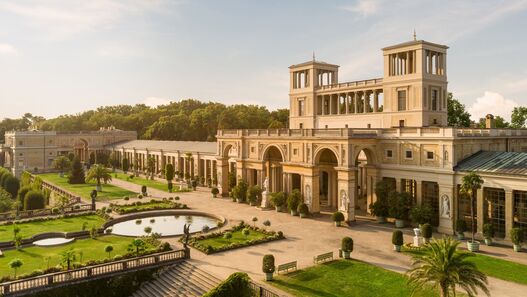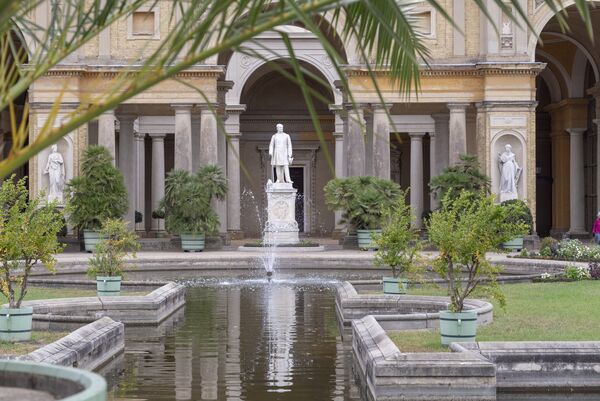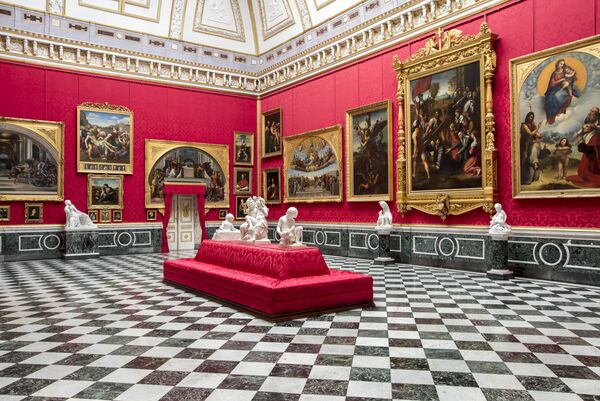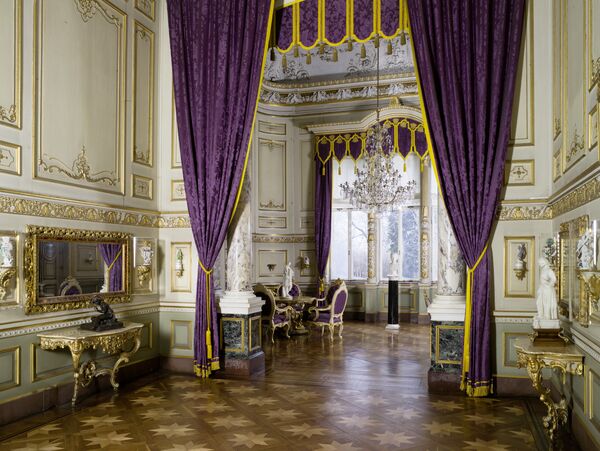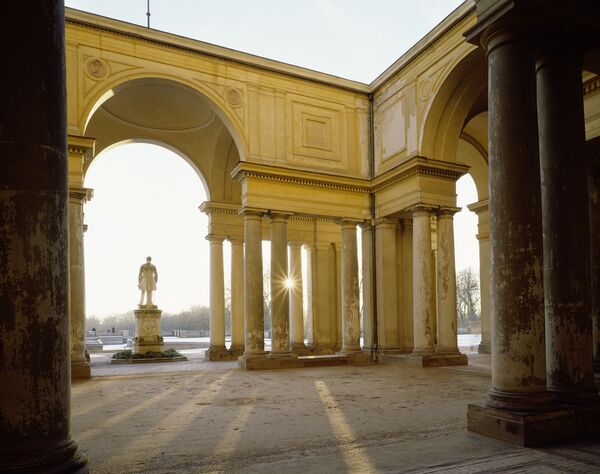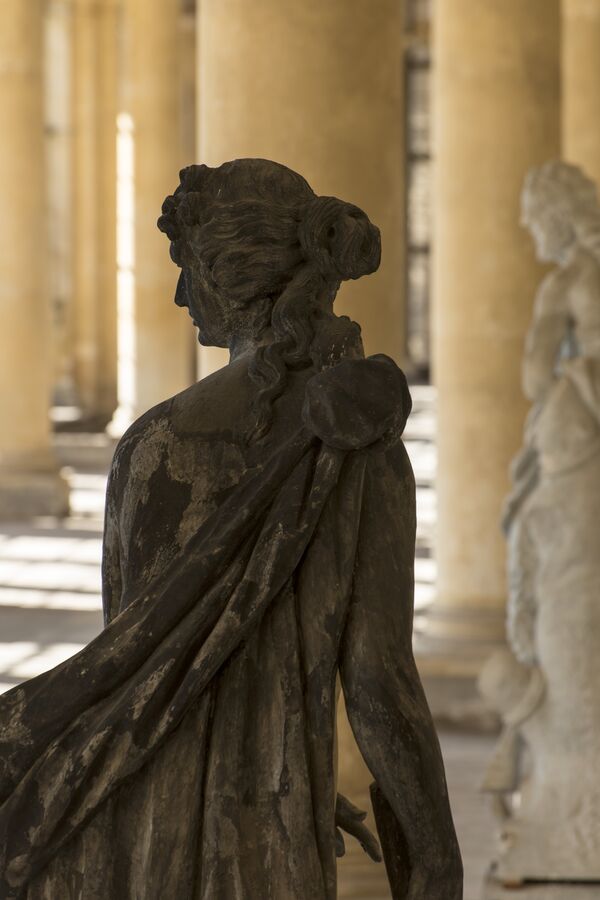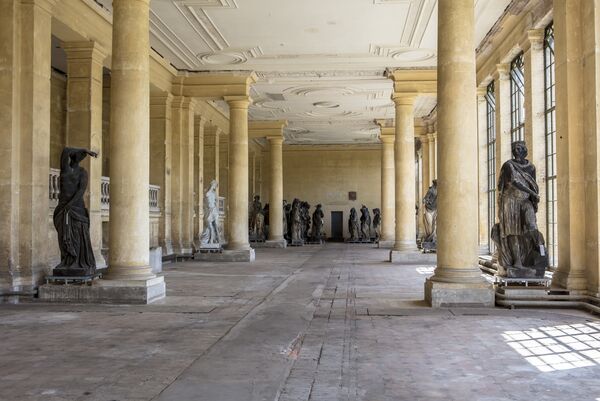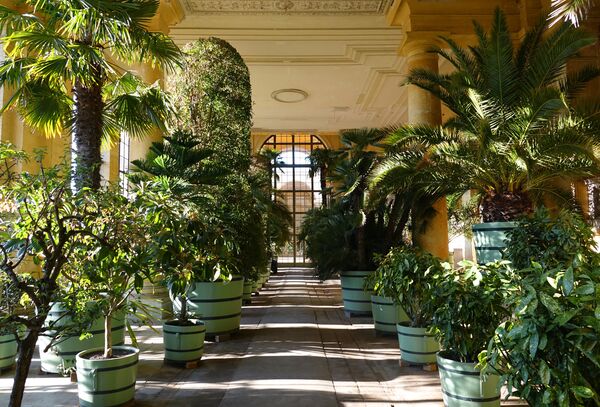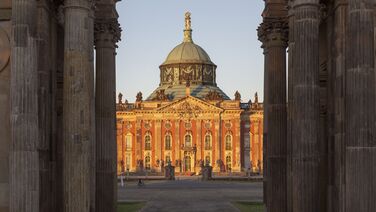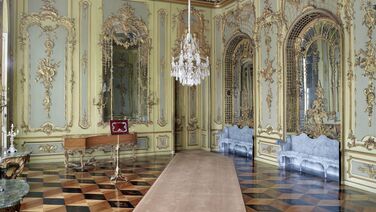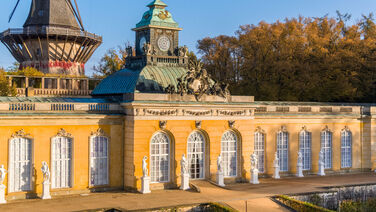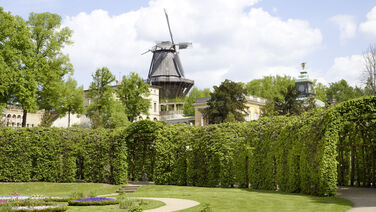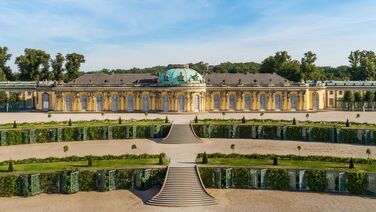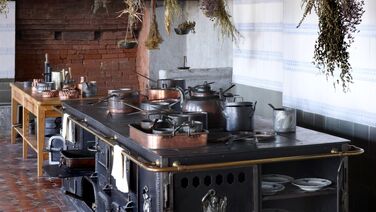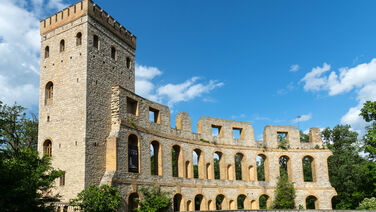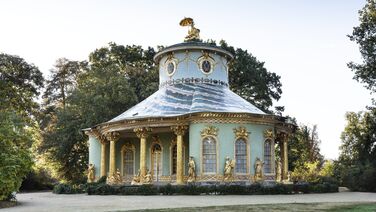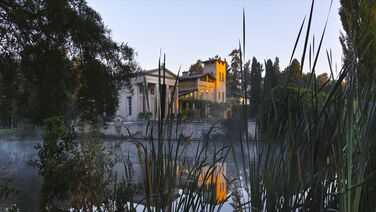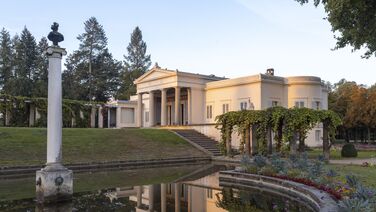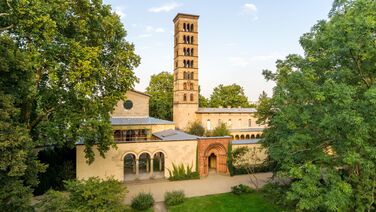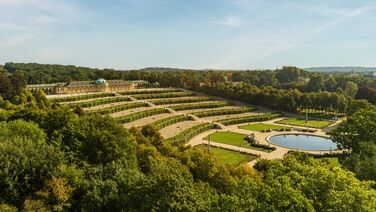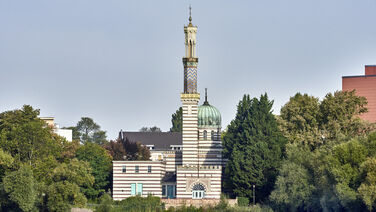Orangery PalaceSplendid flora and Italian Masters
closed due to restoration work
The Orangery Palace is closed due to restoration work performed as part of the "Prussian Palaces and Gardens Master Plan". Thank you for your understanding.
The Orangery Palace at Sanssouci was the last and largest palace building constructed in Sanssouci Park. It is an impressive example of the buildings erected by Frederick William IV, the "Romantic on the throne." The imposing structure with its plant halls and central palace, sculptures, fountains, arcades and terraces evokes the flair of southern architecture in Potsdam and manifests Frederick William IV's love of Italy in tangible form.
The ensemble was created in the years between 1851 and 1864. During the long phase of construction, the architects Ludwig Persius, August Stüler and Ludwig Ferdinand Hesse were occupied with the plans, although the king contributed a number of its designs.
In addition to the lateral plant halls, which today still serve as the winter storage for frost-sensitive tubbed plants, the over 300-meter-long building also used to house royal suites and servants' quarters. The plant halls are among the largest indoor special events locations (1000 people per hall) in the Berlin-Brandenburg region.
The central section of the three-winged palace complex encompasses the impressive Raphael Hall, with its interesting collection of more than fifty 19th century copies of paintings by Raphael, including such well-known works as the Sistine Madonna and the Transfiguration. The red silk wall coverings add to the opulence and splendor of the paintings in their gilded frames. Particularly worth noting is the Malachite Room in the guest apartments, lavishly adorned with sculptures, gilded décor and decorative arts objects.
Orangerieschloss
An der Orangerie 3-5
14469 Potsdam
Public Transportation
Stop "Potsdam, Orangerie/Botanischer Garten"
vbb-online | Timetable information
Traffic information
Parking
Paid parking spaces for cars and buses in the car park P1 – At the Historic Windmill and P3 – At the New Palace.
Visitor Centre Historic Windmill in Sanssouci Park
An der Orangerie 1
14469 Potsdam
Closed Mondays
Visitor Centre New Palace in Sanssouci Park
Am Neuen Palais 3
14469 Potsdam
Closed Tuedays
info@spsg.de
Phone: +49 (0) 331.96 94-200
contact form for booking requests
gruppenservice@spsg.de
Phone: 0331.96 94-222
Fax: 0331.96 94-107
- conditionally barrier-free
The palace rooms are wheelchair accessible. Unfortunately, the Tower at Orangery Palace is not accessible for wheelchair users.
For conservation reasons, it is unfortunately not possible to use prams / baby strollers in the exhibition rooms.
In the surroundings you will find the following dining options:
‘coffee bike’
on the ‘forum’ near to the Chinese House
Café Caroline
at the Visitor Centre at the New Palace (South Gate Building / "Südtorgebäude")
Theaterklause
near the entrance "Grünes Gitter"
Augustiner im Bürgerbahnhof
next to the station "Park Sanssouci"
Café Repin
near Picture Gallery and Sanssouci Palace
Drachenhaus Restaurant & Cafe im Park Sanssouci
between "Paradiesgarten" and Belvedere Klausberg
Lottenhof / Bill's Kitchen
near Charlottenhof Villa
Zur Historischen Mühle
near Sanssouci Palace
Our group offers you can find here
Please note: No luggage or baggage may be left in the entrance area of the palace for security and safety reasons.
A limited number of lockers are available for smaller pieces of baggage (up to 35 x 35 x 50 cm).
The SPSG offers a free shuttle service between the Grünes Gitter (Green Grille) and the New Palace on the so-called “Ökonomieweg” in Sanssouci Park from April to October, daily from 11 am to 5.30 pm.
As the shuttle service is only made possible by the voluntary work of the drivers, we ask for your understanding if the service is not always available. Unfortunately, the shuttle service is also not available during heavy rain.

